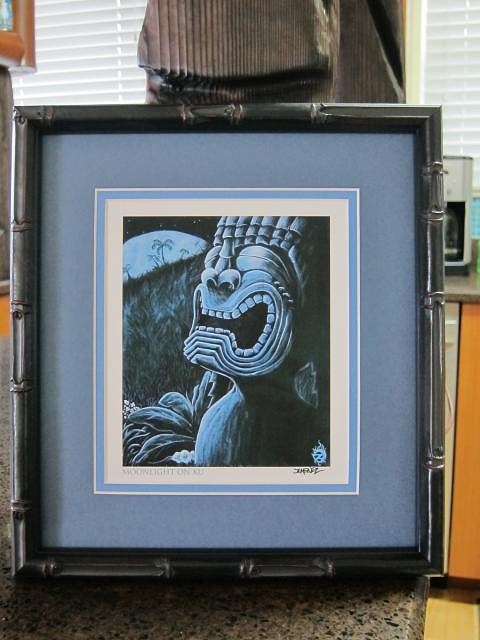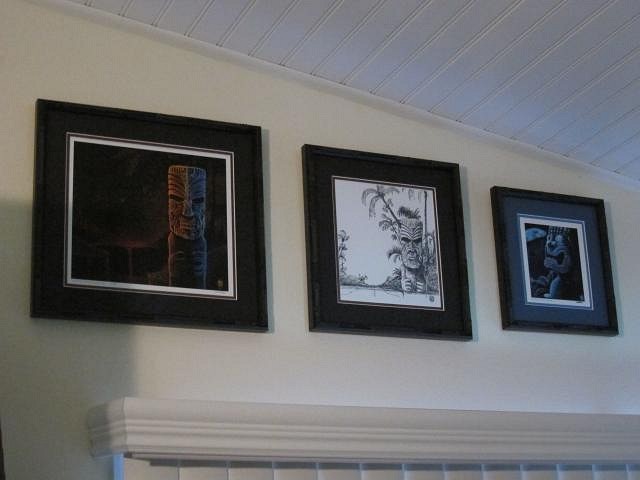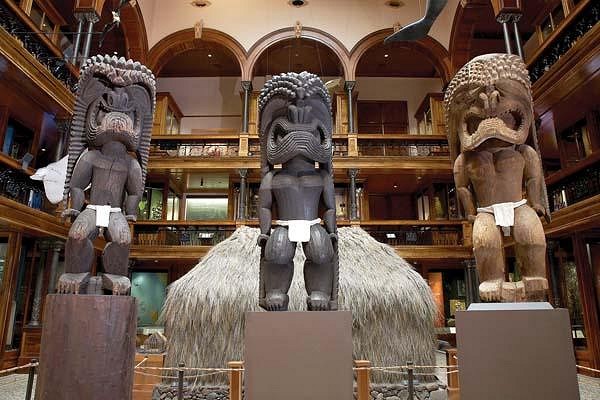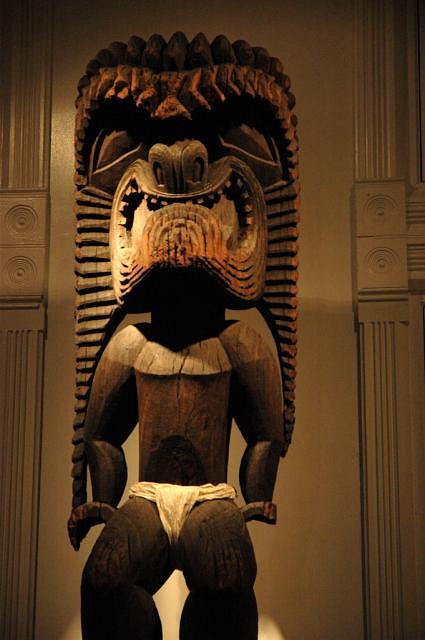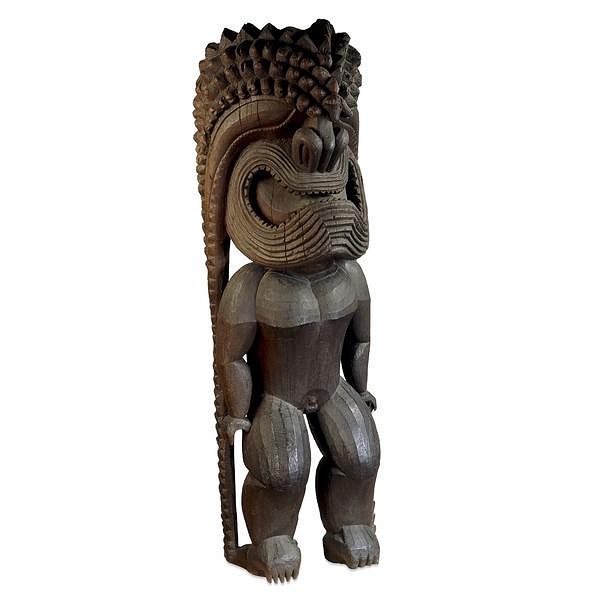Tiki Central / Home Tiki Bars / Blowfish Bar – Flagler Beach, FL
Post #623565 by TikiTomD on Sat, Feb 4, 2012 5:42 AM
|
T

TikiTomD
Posted
posted
on
Sat, Feb 4, 2012 5:42 AM
Mike, astute observation on the paradox of the currency bill images. It reflects a lack of good "staff" work on the part of the Cook Islands Treasury, or perhaps there is a Lorena, Catherine or Brenda in the Treasury busy cropping off phalluses on all the currency images... Another art treasure from Robert Jimenez (zerostreet) was framed and now joins others at the Blowfish Bar. This mini art print is entitled “Moonlight on Ku”...
“Moonlight on Ku” has a certain menacing quality about it. Ku’s visage here conjures up Ku-waha-ilo (“Ku of the maggot-dropping mouth”), the man-eating god of Hawai`i. Ku in this form was the only major Hawaiian deity associated with ritualistic human sacrifice, conducted in a special kind of heiau (temple) known as a luakini (“many graves”). Victims were often strangled or drowned to avoid disfiguring their bodies so they looked more pleasing on the altar; sometimes they were poisoned with blowfish, whose internal organs contain a lethal paralytic toxin, tetrodotoxin. Should the smoke of fires from certain luakini fall upon anyone, chief or commoner, the unfortunate individual was subject to sacrifice at that heiau, as related by W. D. Westervelt in Hawaiian Legends of Ghosts and Ghost-Gods, published in 1916. The Mu (“body catcher”) and his assistants were on the lookout day and night from the heiau walls for potential victims. In an earlier time, according to Hawaiian tradition, Ku was a kinder, gentler deity who was worshiped to produce good crops, good fishing, long life, and family and national prosperity. In this time, the Hawaiian people had an egalitarian society that embodied the spirit of Aloha. Then, according to legend, a high priest from Samoa named Pa There are three surviving great Ku images from antiquity left in the world, one each in the Bishop Museum in Honolulu, the British Museum in London and the Peabody Essex Museum in Salem, Massachusetts. Each is about six feet high and weighs 600 to 800 pounds. In 2010, all three were temporarily exhibited together in the Bishop Museum... Three Ku's on exhibit in Bishop Museum's Hawaiian Hall Ku from Peabody Essex Museum on exhibit at Bishop Museum, posted by maxandcats on Flickr Ku at British Museum Some interesting related articles are “Farewell, for now” in the Honolulu Weekly of September 22, 2010; “Hawaiian Homecoming” in The Maui News of June 27, 2010; and “He’s Back – Ku returns amid honors from Hawaiian Delegation” by the Peabody Essex Museum. -Tom |

